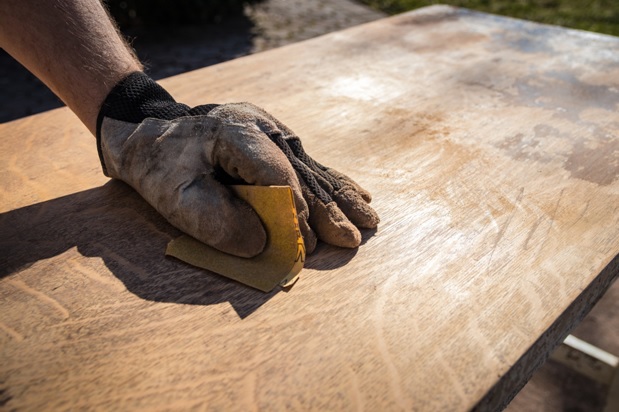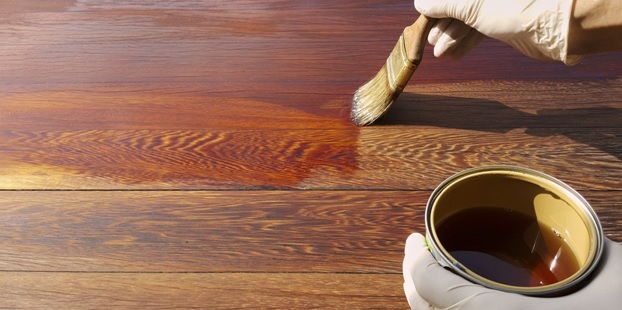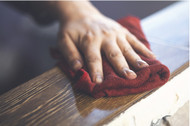Some Tips for Working with Walnut Veneer
Oct 19th 2023
Walnut wood is among the most cherished of all hardwood species, especially for a domestically-produced stock.
Walnut heartwood has rich, dark tones that cannot be rivaled and the wood itself can be brought to a brilliant luster that positively gleams when finished properly and treated with the right agents.
But, be that as it may, working with walnut wood (and veneer) is not necessarily the easiest. There are other more forgiving woods and special considerations that you must take to account for the species and the fact that you’re working with veneer and not solid hardwood.
With that said, here are some tips for working with walnut veneer, be it flat cut, quartered, rift, figured, or walnut burl.
When Finishing Walnut Veneer, Avoid Power-Sanding Equipment
Even when working with solid walnut hardwood, finishing by hand is best, even though it takes longer.
With walnut veneer, that concern is even more striking. There is a risk of sand-through if you use power sanding equipment without treading lightly. In fact, backed wood veneer sheets come production sanded and require only a light going over with 180 grit sandpaper. If you are inexperienced or uncomfortable with it skip the power sander and go with a sanding block. It will take longer, and it may tire you out, but the results are worth it.

Walnut Veneer Is Susceptible to UV-Accelerated Color-Shifting
Beautiful as walnut veneer is, it’s susceptible to UV-related discoloration. All wood is, but walnut, with it’s dark coloration (and the stark contrast between heartwood and sapwood) is particularly susceptible to it.
There are two methods to deal with this. One is to keep the finished product away from and out of direct sunlight, the other is to use a UV-stable finish that will help shield it against UV. You can also do both.
Most finishes will do a decent job, including common top coats like polyurethane, shellac and lacquer. Some penetrating oils like tung oil, danish oil, and linseed oil also will, but keep in mind they can change the color of the wood, too.
Walnut Veneer Will Change Color As It Oxidizes
Walnut veneer doesn’t just discolor in the presence of UV light. It also oxidizes as it ages and will change to an orange-gold, even honeyish color.
This is very different from the original tones of the wood - so be prepared to counter it.
The use of a penetrating oil and topcoat finish can help prevent this, because these create a barrier between the wood and air. Air is what actually causes oxidation, so creating a barrier will help prevent it.
So be sure to apply a topcoat like poly, shellac or lacquer if you do use one of these penetration oils. A good choice is to use a shellac sealer and then polyurethane as a topcoat.

Walnut Is Durable but Still Needs to Be Protected
Walnut is a hard wood (even for a hardwood, no pun intended) with a Janka rating of 1010. It’s softer than oak - but what domestic wood isn’t?
Anyway, even given the fact that walnut is a pretty tough wood that stands up to a lot of use and hard traffic, you should still protect the wood with a topcoat and refinish as needed.
If you go years and years your project will be disappointingly dull, so keep up with it.
Walnut Veneer May Actually Have a Legitimate Advantage Over Solid Hardwood
One final tip, a word to the wise that not all woodworkers may be aware of. Walnut, though a beautiful hardwood, is prone to knots and other deformities and irregularities.
When it comes to making furniture, these flaws do nothing to compromise the strength and integrity of the wood - but they can produce a somewhat less-than-desirable appearance and overall finish.
Here’s a tip for you. The best, highest-quality, most flawless walnut logs are most often reserved for the production of walnut veneer.
If your project involves the use of walnut, consider using veneer instead of solid hardwood. Not only are you likely to save money, but you will likely have an easier time finding blemish-free veneer sheets and have an easier time matching. There are multiple grades and cuts, so be certain to find the walnut veneer that fits your project and your budget.
High-Quality Walnut Veneer in a Wide Range of Cuts
Oakwood Veneer carries a wide range of high-quality walnut veneer in a range of styles and cuts, including flat cut, rift cut, knotty walnut, and even beautiful walnut burl.
For more information visit our collection via the link above or get in touch with us directly at 800-429-6018.
